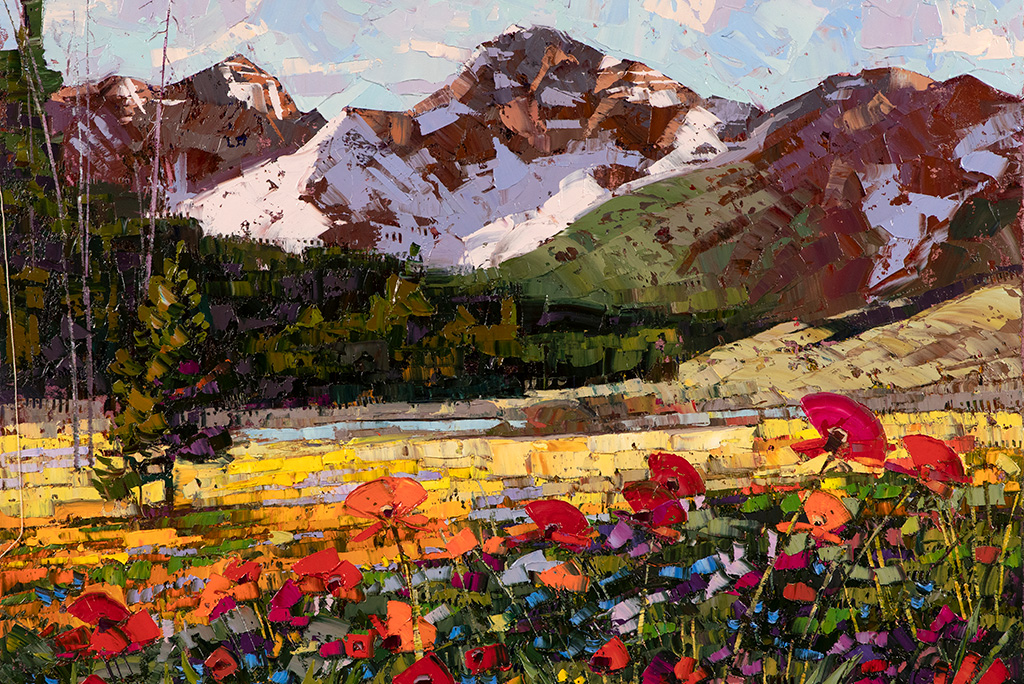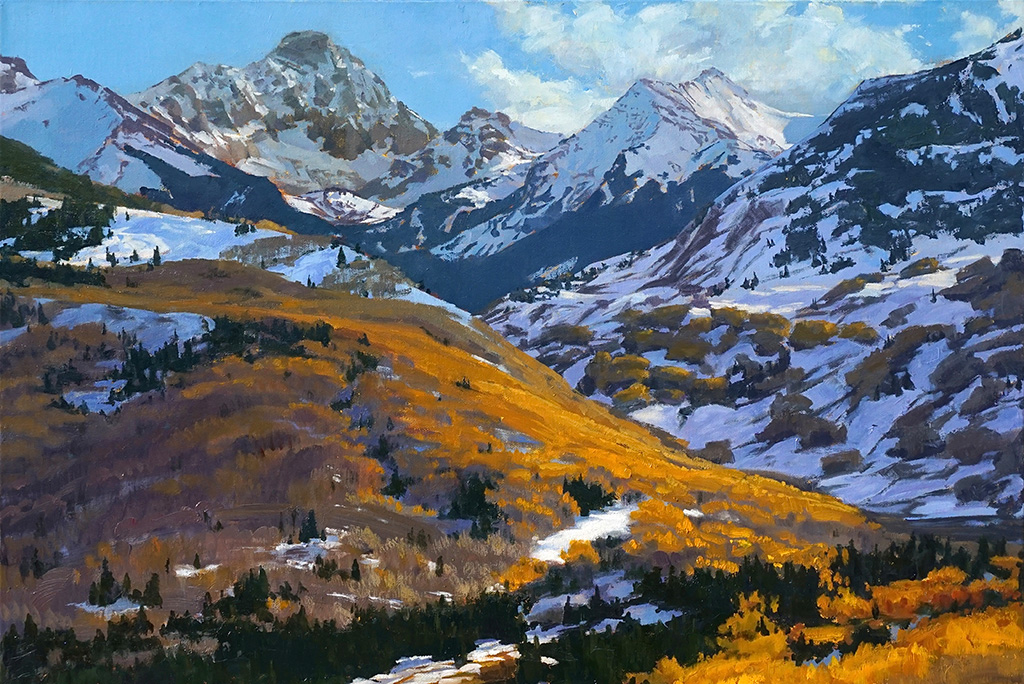The process of painting for impressionistic oil painter Robert Moore is practically a full-body experience, involving constant rotation of the canvas (either by lazy Susan or by hand) and the use of both hands to imbue color to his palette with a palette knife, paint brush, or his own fingers. His unique process and its vivacious results have made him one of the leading impressionistic oil painters in America, with works shown in top galleries in Sun Valley, Fredericksburg, Scottsdale, Prineville, Colorado Springs, Jackson Hole, and Missoula. He has been featured in numerous magazine profiles and was even awarded the Idaho Governors Award for Excellence in the Arts in 2012.
After a lifetime of being exposed to their father’s ideas of design and color, four of Moore’s six children—Robbie, Anna, Rachel, and Caleb—became artists in their own right, and they will exhibit alongside their father this fall at the Kneeland Gallery. “Family Ties: The Moore Family” will exhibit from September 1 to October 12, with an opening reception on Friday, September 2.

“Sawtooth Wildflowers” by Robert Moore at Kneeland Gallery, oil on canvas, 29 in. x 39 in.
Before becoming the renowned Plein Air painter he is today, Moore was once a farm boy, growing up in the Snake River Valley in Declo, Idaho (where, incidentally, he now lives again). As the youngest of five children, Moore drew to get attention. As he pondered his direction his life, he knew he wanted to be outdoors and to use the responsibility instilled in him in his farming upbringing, without actually becoming a farmer. “I didn’t like the tractor work,” says Moore. “So, I thought, ‘how can I be outside, in the mountains, hunting and fishing and still working?’ I thought if I were an artist, I’d still have that flexibility and could just be responsible for sowing my art seeds, instead of farming seeds.”
Moore’s rural Idaho upbringing instilled in him a love of nature that he expresses today on his canvases, resulting in a multitude of vivid oil hues and textured layers. Anywhere there’s nature and beautiful shapes and color relationships is fair game for inspiration for Moore, though his favorite spots tend to be in the Rocky Mountains in the spring and aspen groves in the fall.
The ways in which Moore creates one of his works are unique, owing to several factors, the biggest being that he is partially color blind. This affects his work immensely, from his choice of color palette to the way he sees the canvas. The artist has developed his own system, which utilizes painting horizontally on a large table with a lazy Susan (or simply on the ground when painting en plein air) so he can rotate the canvas constantly. “I paint relationships more than objects,” explains Moore of his technique. He also mostly uses a palette knife instead of a brush, which he says turns colors into a single note, whereas the knife creates a color “chord.”

“Scout Lake” by Rachel Moore (Robert Moore’s daughter) at Kneeland Gallery, oil on canvas.
“You pick up a rock, it’s 20 different colors, not just one color,” explains Moore. “You could play a song on the piano with one finger, and it would be accurate, but it’s a lot richer with chords.” Since Moore’s perception of color varies, his apprentice will keep track of where the colors go on his palette so that in the process of mixing hues and picking up different brushes or knives, he doesn’t mix them.
Also unique to Moore’s process is his use of both hands simultaneously, the result of breaking his dominant wrist when he was 21 and having to learn to use the other. Using both hands cuts his painting time in half as he mixes his colors with two knives, then applies at the same time. The result is thousands of marks on the canvas from his fingers and tools, giving his pieces variety. “I think you can feel how I attack a painting. There’s a lot of energy to it,” says Moore.
The Moore family’s fall show at Kneeland Gallery will feature paintings and sculptures by Moore and his children. Being a family is what ties the art together, but each Moore has their own medium, style, and subject matter, which makes for an interesting show. Rachel, Robbie, and Anna are painters while Caleb is a sculptor. While the children were growing up, Moore would often cart a child in a backpack as he worked outside, exposing his children to the outdoors and its relationship to artistic practice from a young age.
“Since they were children watching me work, they have heard me talk about design and color with my apprentices and students,” says Moore, “so they have a wealth of knowledge, but how they express that in their paintings and sculptures is unique.”


